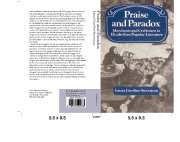Book contents
- Frontmatter
- Contents
- Acknowledgements
- Prefatory note
- Introduction: praise and paradox
- PART I ELIZABETHAN POPULAR LITERATURE
- PART II THE BUSINESSMAN IN ARMOUR
- 4 Principal citizens and chief yeomen
- 5 The merchant as usurer: a stock image in decline
- 6 The merchant as knight, courtier and prince
- 7 Lessons in diligence and thrift
- PART III THE GENTLE CRAFTSMAN
- APPENDICES
- Index
- Past and Present Publications
4 - Principal citizens and chief yeomen
Published online by Cambridge University Press: 29 October 2009
- Frontmatter
- Contents
- Acknowledgements
- Prefatory note
- Introduction: praise and paradox
- PART I ELIZABETHAN POPULAR LITERATURE
- PART II THE BUSINESSMAN IN ARMOUR
- 4 Principal citizens and chief yeomen
- 5 The merchant as usurer: a stock image in decline
- 6 The merchant as knight, courtier and prince
- 7 Lessons in diligence and thrift
- PART III THE GENTLE CRAFTSMAN
- APPENDICES
- Index
- Past and Present Publications
Summary
When Elizabeth I became Queen of England, English merchants were figures of great importance in London and provincial towns, but in literature they were familiar only in two of Chaucer's Canterbury Tales, in London chronicles, and in the works of preachers and satirists who portrayed them as grasping misers. By the end of Elizabeth's reign, however, merchants had become familiar literary figures, and they had acquired a new cultural image as men whose exploits served England well.
The original image of the merchant as usurer did not die out entirely as the more positive portraits of merchants became popular; to morality-play writers, the figure of greed was too interesting to ignore, and so merchants appeared as usurers in such plays as The Tide Tarrieth No Man (1576), The Three Ladies of London (1581) and in Lodge and Greene's late morality play A Looking Glass for London and England (c. 1590). In the hands of Marlowe and Shakespeare, however, the usurer took on sins beyond greed; and in the hands of Heywood and Haughton, usurers became ‘stock’ villains and outraged fathers. By the end of our period, the usurer had ceased to be criticized merely for lending at interest and was given a new list of characteristics.
As the usurer became increasingly weak and silly on the stage, some popular authors experimented with the flexibility of the medieval merchant stereotypes.
- Type
- Chapter
- Information
- Praise and ParadoxMerchants and Craftsmen in Elizabethan Popular Literature, pp. 77 - 91Publisher: Cambridge University PressPrint publication year: 1984
- 2
- Cited by



